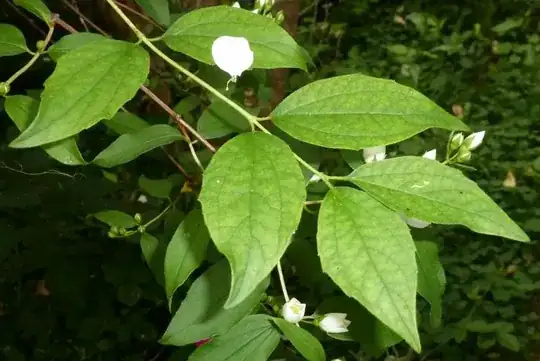There's a small tree or large woody shrub in our garden with fragrant flowers appearing in June in Oregon. Although four-petaled and white, they seem different from the dogwoods we have. The petals seem to be true petals and not sepals, and they bud differently. The leaf edges have occasional teeth rather than smooth wavy edges, and the leaves have three veins rather than the one central vein of the dogwood leaves. Very pleasant plant and would like to identify it in order to be better able to encourage it.
2 Answers
This appears to be a Philadelphus variety, most likely Philadelphus coronarius (or one of its cultivars) judging by the yellow stamens of the flowers and the slight hooked appearance at the edge of some of the leaves. Photo of flowers here
http://www.latin-wife.com/blog/colombia/philadelphus-coronarius/
Information and more pictures here - leaves of P. coronarius are shown lower down the page
http://www.extension.umn.edu/garden/yard-garden/trees-shrubs/Mockorange/index.html
Its often called 'mock orange' because the scent is said to resemble orange blossom. In warmer regions, they may remain evergreen, but are generally deciduous shrubs. This shrub and its varieties are very common in the UK, and here it is deciduous and is generally pruned back after flowering, with some shoots removed at ground level as it matures to keep the size in check and reduce the chances of congestion and dead branches towards the centre. Not sure if this is necessary where you are - if its growing tidily, flowers well and isn't too large for its space, it may not need it.
- 131,823
- 3
- 72
- 162
Bamboo is correct that this is a Philadelphus variety, but I think it's more likely to be Lewis' mock-orange (Philadelphus lewisii), which is native to Oregon:
https://www.fs.usda.gov/detail/boise/learning/nature-science/?cid=fsed_009688
- 11
- 1

